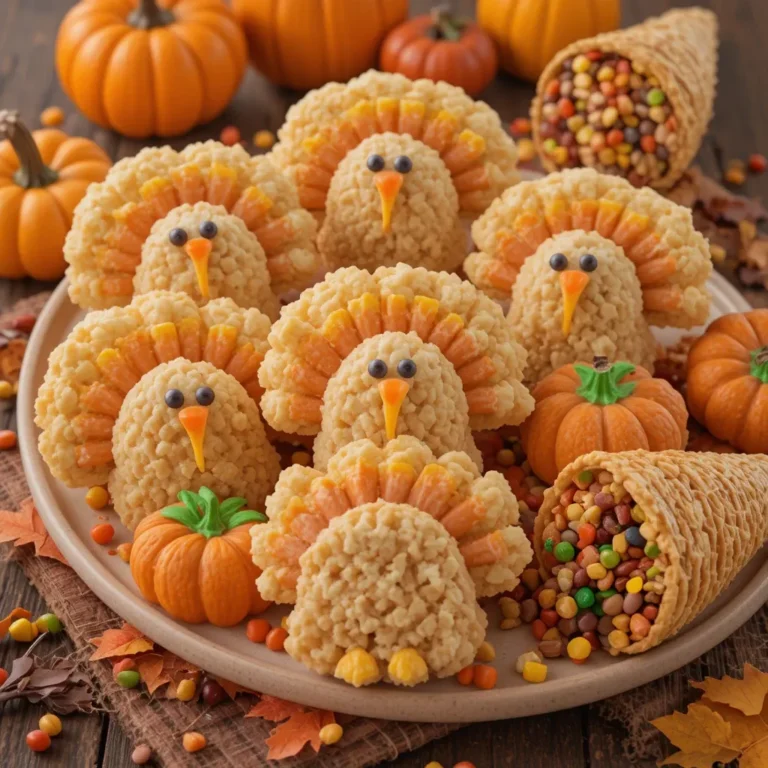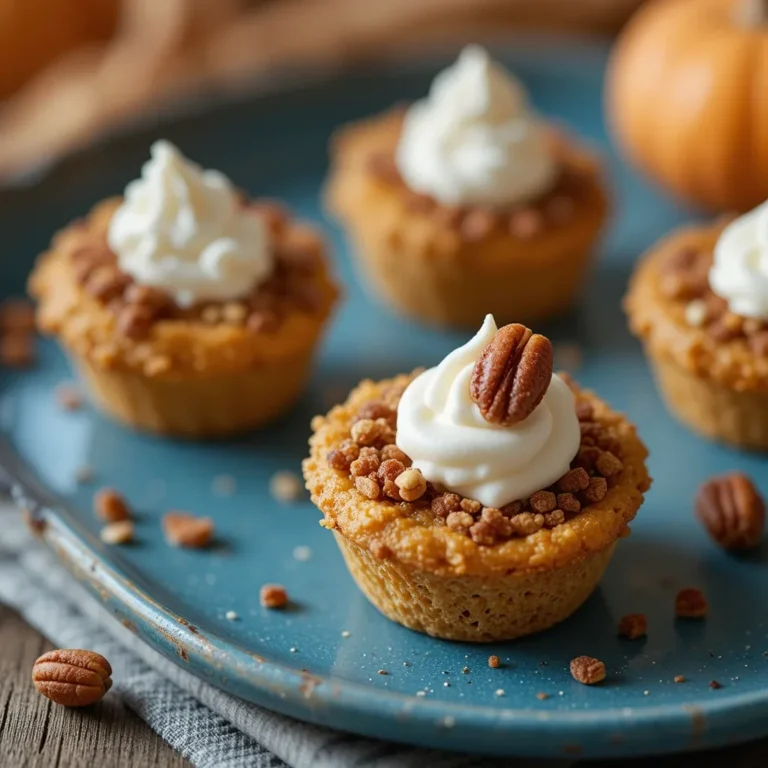Southern Thanksgiving Pies Classic Recipe That’ll Steal the Show
There’s something magical about southern thanksgiving pies that transforms an ordinary holiday meal into an unforgettable feast. These buttery, flaky masterpieces carry generations of tradition in every bite. Growing up in Georgia, I learned that Thanksgiving wasn’t complete without at least three pies cooling on the kitchen counter.
The aroma of cinnamon, pecans, and vanilla filling the house is what holiday memories are made of. What makes southern thanksgiving pies special is their perfect balance of sweetness and richness, wrapped in the most tender, golden crust you’ve ever tasted.
What Are Southern Thanksgiving Pies?
Ever wondered why southern thanksgiving pies taste different from their northern counterparts? It’s all about that Southern hospitality baked right in! These aren’t just desserts; they’re love letters written in sugar, butter, and patience. From the iconic pecan pie to the silky sweet potato creation, each pie tells a story of family gatherings and cherished recipes passed down through worn recipe cards.
As the old saying goes, “the way to a man’s heart is through his stomach,” and Southern grandmothers have perfected this art with their thanksgiving pies. Trust me, once you make these beauties, you’ll understand why folks plan their entire meal around dessert!
Why You’ll Love These Southern Thanksgiving Pies
They’re Showstoppers That Taste Like Home
Southern thanksgiving pies are the crown jewels of any holiday table. The combination of crispy, buttery crust with luscious fillings creates textures that dance on your tongue. Whether it’s the gooey pecan filling studded with toasted nuts or the velvety sweet potato custard spiced with warm cinnamon and nutmeg, each bite transports you straight to your grandmother’s kitchen.
Budget-Friendly Holiday Magic
Making southern thanksgiving pies at home saves you serious money compared to bakery prices. A homemade pecan pie costs about $8-10 to make, while bakeries charge $25-30 for the same quality. Plus, you control the ingredients, meaning real butter, fresh spices, and no preservatives. Your wallet and your guests will thank you!
Endless Flavor Possibilities
The beauty of southern thanksgiving pies lies in their versatility. Top your sweet potato pie with marshmallow meringue or keep it classic with whipped cream. Add bourbon to your pecan pie for adult flair, or fold in chocolate chips for the kids. Sprinkle toasted coconut on your chess pie or drizzle it with salted caramel. Just like my popular Southern Butter Pound Cake recipe, these pies welcome creativity while honoring tradition. I encourage you to start with the classic versions, then make them your own!
How to Make Southern Thanksgiving Pies
Quick Overview
Southern thanksgiving pies are easier than you think! With simple pantry ingredients and straightforward techniques, you’ll create bakery-worthy pies that’ll have everyone asking for seconds. The secret? Quality ingredients, patience with your crust, and baking at the right temperature. Most pies feature a buttery, flaky crust filled with rich, sweet fillings that set up beautifully as they cool.
Time Breakdown:
- Prep Time: 30 minutes
- Chill Time: 1 hour
- Baking Time: 45-60 minutes
- Total Time: 2 hours 30 minutes
Classic Southern Pecan Pie
Key Ingredients for Southern Pecan Pie
For the Crust:
- 1¼ cups all-purpose flour
- ½ teaspoon salt
- ½ cup cold unsalted butter, cubed
- 3-4 tablespoons ice water
For the Filling:
- 1 cup light corn syrup
- ¾ cup granulated sugar
- 3 large eggs
- 3 tablespoons unsalted butter, melted
- 1 teaspoon vanilla extract
- ¼ teaspoon salt
- 2 cups pecan halves
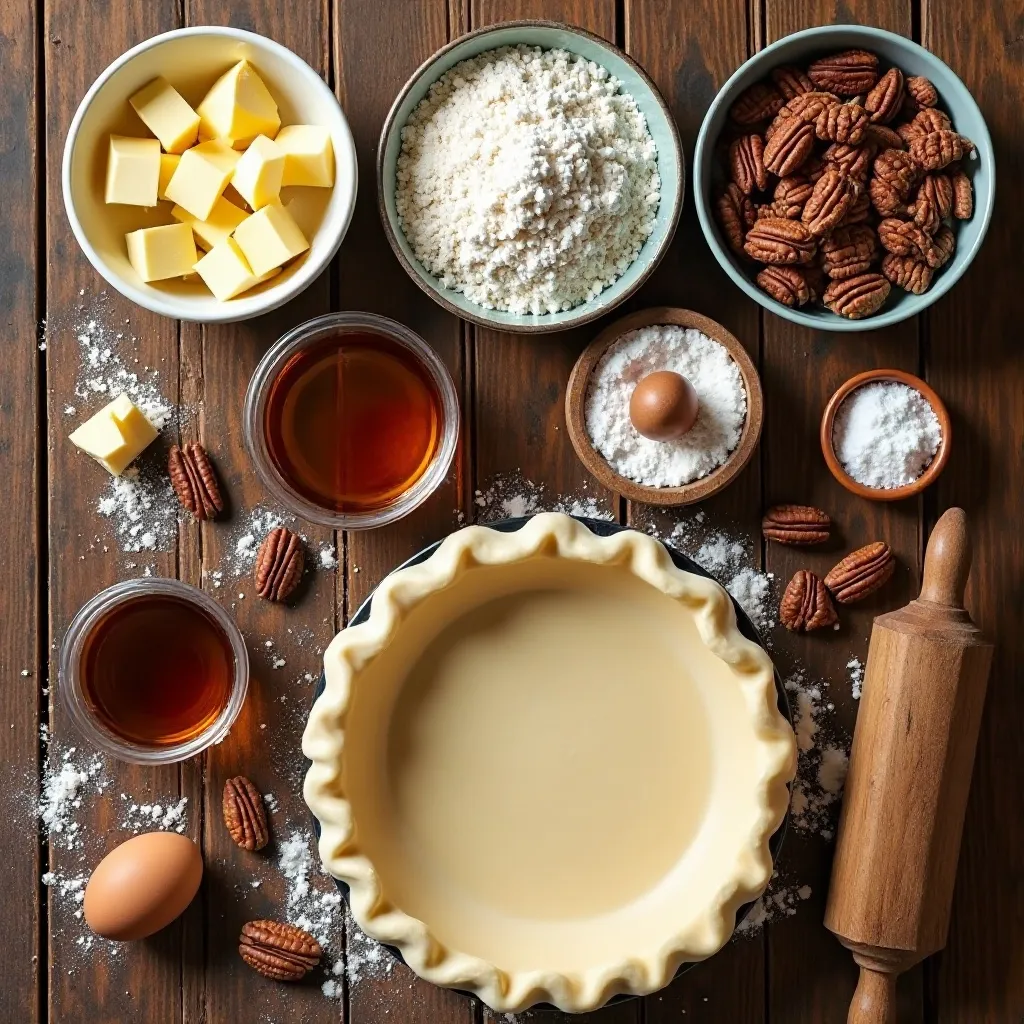
Step-by-Step Instructions
Making the Perfect Pie Crust
Start by combining flour and salt in a large bowl. This forms the foundation of your flaky crust. Add the cold butter cubes and work them into the flour using a pastry cutter or your fingertips until the mixture resembles coarse crumbs with pea-sized butter pieces. These butter chunks create the flakiness we’re after.
Drizzle in ice water one tablespoon at a time, mixing gently with a fork after each addition. Stop adding water when the dough just comes together. Overworking creates tough crust, so handle it as little as possible.
Shape the dough into a flat disc, wrap it tightly in plastic wrap, and refrigerate for at least one hour. This chilling time allows the gluten to relax and the butter to firm up, making rolling easier and preventing shrinkage.
Rolling and Fitting the Crust
Remove your chilled dough and let it sit at room temperature for 5 minutes. On a lightly floured surface, roll it out from the center outward, rotating the dough occasionally to maintain a circular shape. Aim for a 12-inch circle about ⅛-inch thick.
Carefully transfer the dough to a 9-inch pie pan by rolling it loosely around your rolling pin, then unrolling it over the pan. Gently press it into the bottom and sides, being careful not to stretch the dough. Trim the overhang to about 1 inch, then fold it under itself and crimp decoratively.
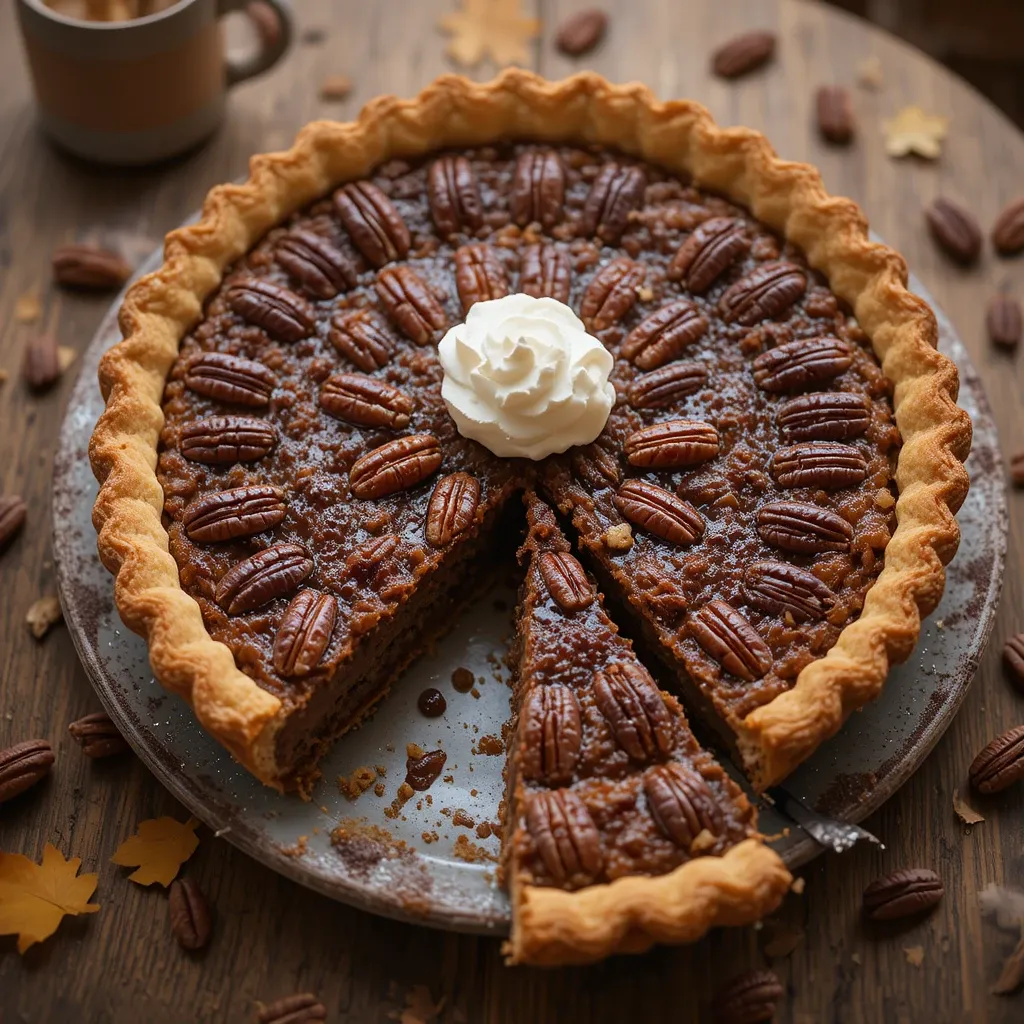
Preparing the Pecan Filling
Preheat your oven to 350°F. In a medium bowl, whisk together corn syrup, sugar, eggs, melted butter, vanilla, and salt until smooth and well combined. The mixture should be glossy and uniform.
Arrange pecan halves in the bottom of your prepared pie crust in a single layer, flat side down for a beautiful presentation. Pour the filling mixture slowly over the pecans, ensuring it seeps into all the gaps. The pecans will float to the top during baking, creating that signature appearance.
Baking to Golden Perfection
Place the pie on the center rack and bake for 50-60 minutes. The pie is done when the edges are set but the center still has a slight jiggle when gently shaken. The filling will continue to set as it cools, so don’t overbake.
If the crust edges brown too quickly, cover them with aluminum foil or a pie shield after 30 minutes. Let the pie cool completely on a wire rack for at least 3 hours before slicing. This cooling time is crucial for the filling to set properly.
Southern Sweet Potato Pie
Key Ingredients for Sweet Potato Pie
For the Filling:
- 2 cups mashed sweet potatoes (about 2 large)
- ¾ cup granulated sugar
- ½ cup evaporated milk
- 2 large eggs
- 3 tablespoons unsalted butter, melted
- 1 teaspoon vanilla extract
- 1 teaspoon ground cinnamon
- ½ teaspoon ground nutmeg
- ¼ teaspoon ground ginger
- ¼ teaspoon salt
- 1 unbaked pie crust
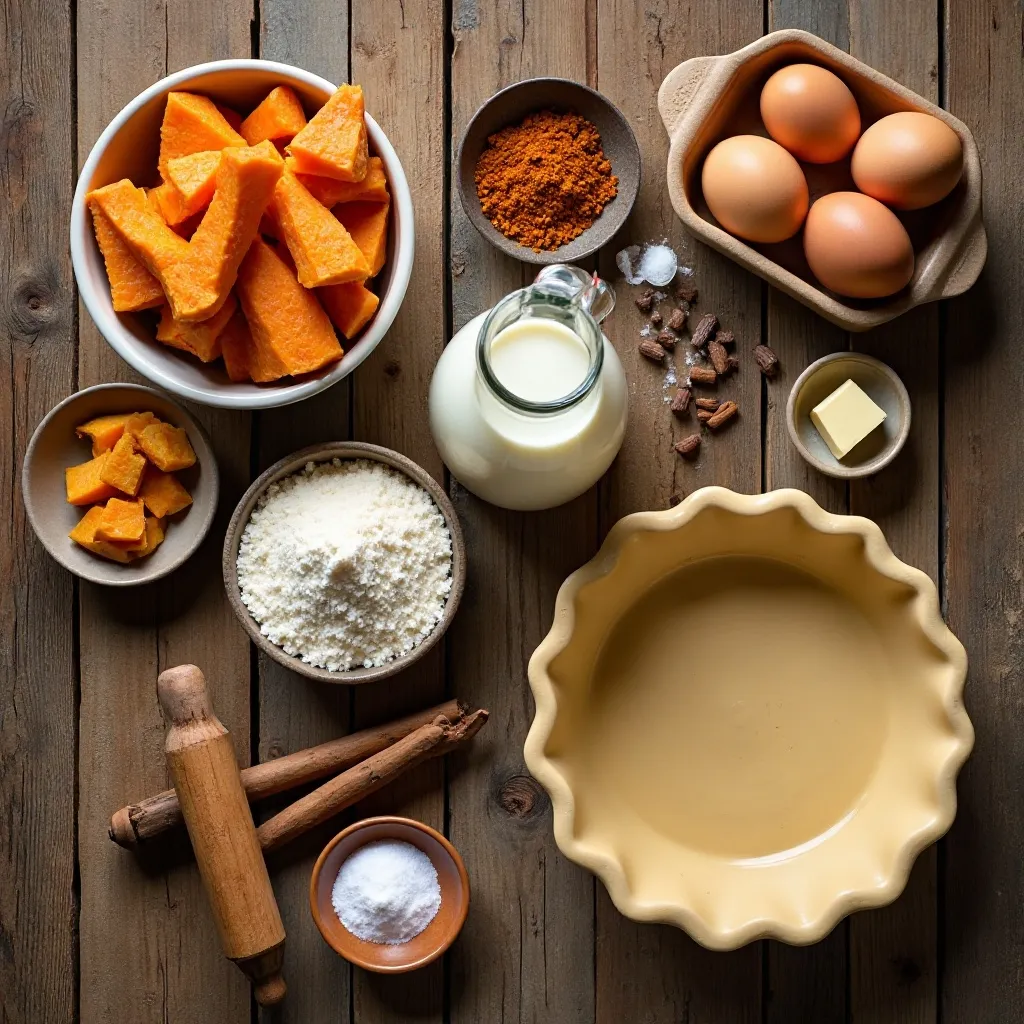
Step-by-Step Instructions
Preparing the Sweet Potatoes
Pierce sweet potatoes several times with a fork and bake at 400°F for 45-60 minutes until tender when squeezed. This roasting method intensifies their natural sweetness. Let them cool slightly, then peel off the skins and mash the flesh thoroughly until smooth. You can also boil them if preferred, but roasting adds deeper flavor.
Creating the Custard Filling

In a large mixing bowl, combine mashed sweet potatoes, sugar, evaporated milk, eggs, melted butter, and vanilla. Use an electric mixer on medium speed to blend until completely smooth and creamy, about 2 minutes. Add cinnamon, nutmeg, ginger, and salt, mixing until the spices are evenly distributed throughout.
Baking Your Sweet Potato Pie
Pour the filling into your unbaked pie crust, smoothing the top with a spatula. Bake at 350°F for 55-60 minutes until the center is just set with a slight wobble. A knife inserted near the center should come out mostly clean. Cool completely before serving, allowing the custard to firm up beautifully.
Classic Southern Chess Pie
Key Ingredients for Chess Pie
- 1½ cups granulated sugar
- 1 tablespoon cornmeal
- 1 tablespoon all-purpose flour
- 4 large eggs
- ¼ cup milk
- ¼ cup unsalted butter, melted
- 1 tablespoon white vinegar
- 1 teaspoon vanilla extract
- 1 unbaked pie crust

Step-by-Step Instructions
Mixing the Chess Pie Filling
Whisk together sugar, cornmeal, and flour in a large bowl. These dry ingredients give chess pie its characteristic slightly grainy texture. Add eggs one at a time, beating well after each addition until the mixture is light and fluffy.
Pour in milk, melted butter, vinegar, and vanilla, whisking until completely smooth. The vinegar adds a subtle tang that balances the sweetness perfectly. Pour this mixture into your unbaked pie shell.
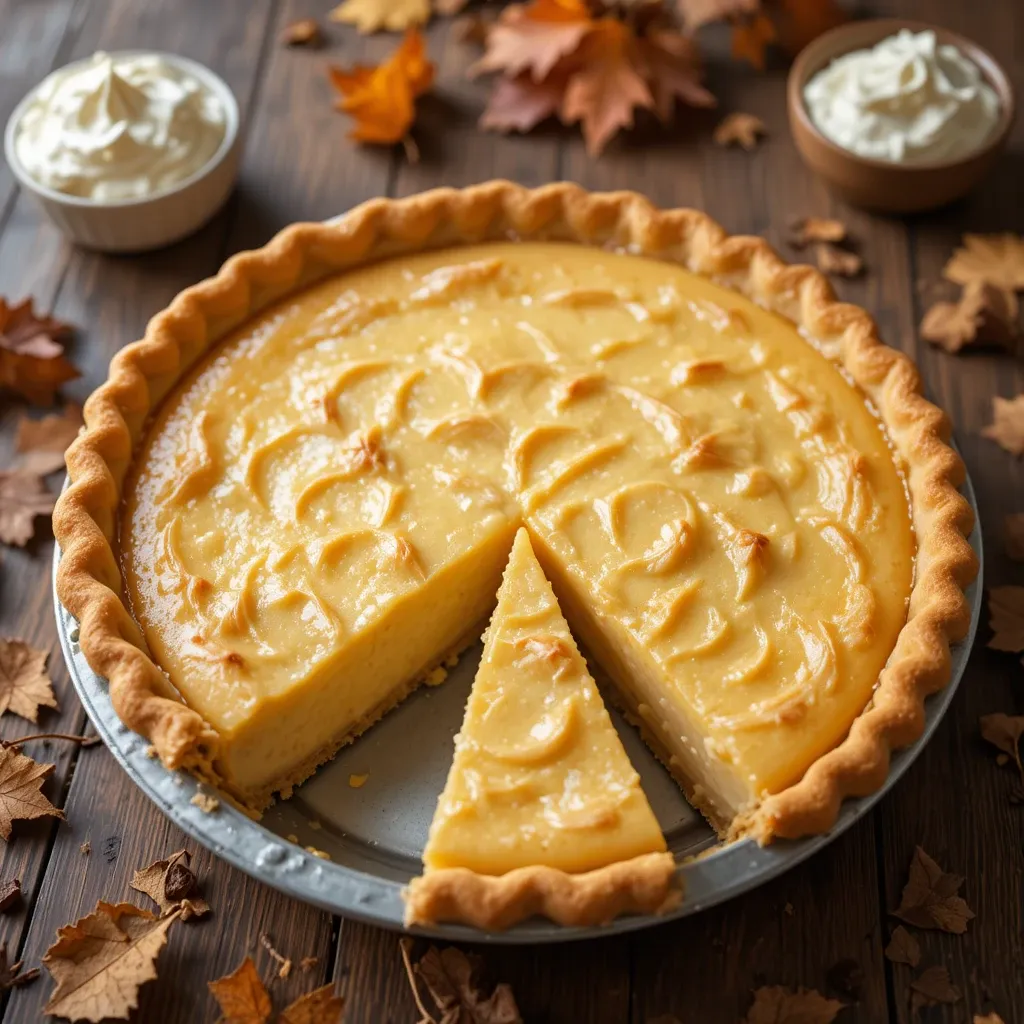
Baking the Chess Pie
Bake at 350°F for 45-50 minutes until the top is golden brown and the filling is set with just a slight jiggle in the center. The pie will puff up during baking and settle as it cools, creating that classic crackly top. Let it cool completely on a wire rack.
What to Serve Southern Thanksgiving Pies With
These pies shine brightest alongside traditional companions. A generous dollop of fresh whipped cream adds luxurious creaminess that cuts through the sweetness. For pecan pie, try it warm with a scoop of vanilla bean ice cream melting into the gooey filling.
Sweet potato pie pairs beautifully with bourbon whipped cream or toasted marshmallow topping. Chess pie loves a drizzle of salted caramel sauce or fresh berries on the side.
Serve your pies with hot coffee, spiced apple cider, or Southern sweet tea. Some families enjoy a slice with a glass of cold milk. For an adults-only gathering, pair pecan pie with bourbon or sweet potato pie.
Don’t forget the presentation! Dust with powdered sugar, add a cinnamon stick garnish, or arrange candied pecans around the plate. These small touches make your pies Instagram-worthy.
Top Tips for Perfecting Southern Thanksgiving Pies
Master Your Crust Game
Use cold butter and ice water for the flakiest crust. Cut butter into flour until you see pea-sized pieces, not smaller. Those butter chunks create steam pockets during baking, resulting in layers. Don’t overwork the dough; handle it just until it comes together.
Blind baking prevents soggy bottoms for custard pies. Line your crust with parchment paper, fill with pie weights or dried beans, and bake at 375°F for 15 minutes before adding filling.
Temperature Matters
Always preheat your oven fully before baking. An oven thermometer ensures accuracy since many ovens run hot or cold. This makes the difference between perfectly set pies and underbaked disasters.
Room temperature eggs incorporate more smoothly into fillings, creating silkier textures. Take them out of the fridge 30 minutes before baking.
Timing Is Everything
Don’t overbake! Southern thanksgiving pies continue cooking after removal from the oven due to residual heat. Pull them when the edges are set but the center still jiggles slightly. This ensures creamy, not rubbery, fillings.
Cool pies completely before slicing. I know it’s tempting to dig in while warm, but patience rewards you with clean slices that hold their shape. Plan for at least 3 hours of cooling time.
Ingredient Substitutions
Dark corn syrup can replace light in pecan pie for deeper molasses flavor. Brown sugar instead of white adds caramel notes to any pie. For a healthier twist, swap half the butter with coconut oil.
Can’t find evaporated milk? Use half-and-half or whole milk in sweet potato pie. No cornmeal for chess pie? Increase flour by 1 tablespoon, though you’ll lose some traditional texture.
Flavor Enhancements
Toast pecans before adding to pie for intensified nutty flavor. A tablespoon of bourbon in pecan pie adds sophisticated depth without overwhelming sweetness. Orange zest brightens sweet potato pie beautifully.
For chess pie variations, add lemon zest and juice for lemon chess pie, or fold in chocolate chips for chocolate chess pie. Don’t be afraid to experiment once you’ve mastered the basics!
Storing and Reheating Tips
Proper Storage Methods
Southern thanksgiving pies stay fresh when stored correctly. Cover cooled pies loosely with aluminum foil or plastic wrap and refrigerate. Pecan pie keeps for 3-4 days refrigerated. Sweet potato and chess pies last 4-5 days in the fridge due to their custard bases.
For longer storage, freeze pies up to 2 months. Wrap them tightly in plastic wrap, then aluminum foil to prevent freezer burn. Label with the date and pie type. Unbaked pie dough freezes beautifully for up to 3 months.
Reheating for Best Results
Pecan pie tastes amazing warmed. Reheat individual slices in the microwave for 20-30 seconds, or warm the whole pie in a 300°F oven for 10-15 minutes. Cover the crust edges with foil to prevent over-browning.
Sweet potato and chess pies are delicious both cold and at room temperature. If you prefer them warm, heat gently at 300°F for 10 minutes. Thaw frozen pies overnight in the refrigerator before reheating.
Frequently Asked Questions
Can I make southern thanksgiving pies ahead of time?
Absolutely! Most southern thanksgiving pies taste even better the next day as flavors meld together. Bake pies 1-2 days before Thanksgiving and store covered in the refrigerator. You can also prepare pie dough up to 3 days ahead or freeze it for up to 3 months.
Why is my pie crust soggy?
Soggy crusts happen when moisture from the filling seeps into unbaked dough. Prevent this by blind baking your crust first, especially for custard pies. Brush the prebaked crust with beaten egg white and bake 2 more minutes to create a moisture barrier before adding filling.
How do I know when my pie is done baking?
Pies are done when edges are set and firm but the center has a slight jiggle when gently shaken. For pecan pie, the filling should look glossy and puffed. Sweet potato and chess pies should be set around the edges with a soft center that will firm up during cooling.
Can I use store-bought pie crust?
Yes! While homemade crust tastes better, quality store-bought crusts work wonderfully when you’re short on time. Look for all-butter crusts in the refrigerated section for best flavor. Let them sit at room temperature for 15 minutes before unrolling to prevent cracking.
What’s the secret to flaky pie crust?
Cold ingredients are key! Use cold butter, ice water, and keep your dough chilled. Handle the dough minimally to avoid developing gluten, which makes crust tough. Those visible butter pieces in your dough create steam pockets during baking, resulting in flaky layers.
Why did my pecan pie turn out runny?
Underbaking is the usual culprit. The filling needs sufficient time to set properly. Also, measure corn syrup accurately; too much creates a loose filling. Make sure your oven temperature is correct using an oven thermometer, and allow the pie to cool completely before slicing.
Can I reduce the sugar in these pies?
You can reduce sugar by about 25% without drastically affecting texture, though pies will be less sweet. Don’t reduce more than that, as sugar provides structure in custard-based pies. Consider serving with unsweetened whipped cream to balance sweetness instead.
How do I prevent cracks in my sweet potato pie?
Avoid overbeating the filling, which incorporates too much air that causes cracking during baking. Don’t overbake; remove the pie when the center still jiggles slightly. Let pies cool gradually at room temperature rather than in the fridge, which can cause rapid temperature changes and cracking.
Tips for Avoiding Common Baking Mistakes
Crust Catastrophes
Shrinking crust happens when dough is stretched rather than gently pressed into the pan. Always let rolled dough relax in the pan before trimming. Chill the shaped crust for 30 minutes before baking to set the butter and prevent shrinkage.
Tough crust results from overworking dough or using too much water. Mix just until dough comes together, and add water sparingly. If dough feels dry and won’t hold together, add water one teaspoon at a time.
Filling Failures
Curdled custard happens when eggs cook too quickly. Always combine sugar with eggs before adding hot ingredients, and never bake above 350°F for custard pies. Stir gently rather than vigorously to avoid incorporating excess air.
Weeping pies occur when custards release liquid. This happens from overbaking or cooling too quickly. Remove pies when slightly underdone and let them cool gradually at room temperature.
Baking Blunders
Burnt edges with raw centers mean your oven temperature is too high or the pie is too close to the heating element. Use an oven thermometer to verify temperature and position pies on the center rack. Shield edges with foil if they brown too quickly.
Bubbling over happens when pies are too full or bake at excessive temperatures. Fill pies only three-quarters full, and place a baking sheet on the rack below to catch drips. Reduce temperature if filling bubbles vigorously.
Texture Troubles
Grainy filling in pecan pie comes from overcooking sugar. Mix filling until just combined and avoid high temperatures. Chess pie naturally has slight graininess from cornmeal, but excessive graininess indicates overbaking.
Dense sweet potato pie results from overmixing or using dry sweet potatoes. Blend filling until just smooth, not fluffy. Choose moist, orange-fleshed sweet potatoes, and roast them rather than boiling for better texture.
Nutrition Information
| Nutrient | Per Slice (Pecan) | Per Slice (Sweet Potato) | Per Slice (Chess) |
|---|---|---|---|
| Calories | 503 | 340 | 395 |
| Total Fat | 27g | 14g | 18g |
| Saturated Fat | 9g | 6g | 8g |
| Cholesterol | 95mg | 75mg | 125mg |
| Sodium | 320mg | 285mg | 290mg |
| Carbohydrates | 62g | 52g | 58g |
| Fiber | 3g | 3g | 1g |
| Sugar | 45g | 35g | 48g |
| Protein | 6g | 5g | 6g |
Based on 8 slices per pie. Values are approximate and may vary based on specific ingredients used.
Advanced Techniques for Experienced Bakers
Creating Decorative Crusts
Take your southern thanksgiving pies to the next level with stunning crust designs. Use small cookie cutters to create leaf shapes, pecans, or stars from leftover dough. Arrange these cutouts around the pie edges before baking for a professional bakery look.
Braided edges add elegance to any pie. Cut three thin strips of dough, braid them together, and attach around the rim with a bit of water. Brush with egg wash and sprinkle with coarse sugar for sparkle.
For lattice tops on pecan pie, weave strips of dough over the filling before baking. This creates beautiful visual interest while allowing steam to escape. Seal the edges well and trim excess dough for clean lines.
Flavor Layering Techniques
Create depth by toasting spices before adding them to sweet potato pie. Heat cinnamon, nutmeg, and ginger in a dry skillet for 30 seconds until fragrant. This unlocks essential oils and intensifies flavors dramatically.
Make compound butter for your crust by mixing softened butter with vanilla extract and a pinch of cinnamon. This adds subtle sweetness throughout the pastry. Freeze in cubes before using in your dough recipe.
Texture Contrasts
Add crunch to sweet potato pie by sprinkling a streusel topping made from flour, brown sugar, butter, and chopped pecans during the last 15 minutes of baking. The contrast between creamy filling and crispy topping is irresistible.
For pecan pie, layer half the pecans on the bottom, pour half the filling, add remaining pecans, then top with remaining filling. This creates pecans throughout rather than just floating on top.
Making Southern Thanksgiving Pies for Special Diets
Gluten-Free Options
Replace all-purpose flour with a quality gluten-free flour blend containing xanthan gum. Bob’s Red Mill 1-to-1 Baking Flour works perfectly for pie crusts. Add an extra tablespoon of cold butter to maintain flakiness.
Almond flour crusts taste amazing with sweet potato pie. Mix 2 cups almond flour with ¼ cup melted butter, 2 tablespoons sugar, and a pinch of salt. Press into the pan and prebake before adding filling.
Dairy-Free Alternatives
Substitute coconut oil for butter in crusts, using the same measurements. Chill it well before cutting into flour. The result is surprisingly flaky with a subtle coconut flavor that complements southern thanksgiving pies beautifully.
Use full-fat canned coconut milk instead of evaporated milk in sweet potato pie. Shake the can well before opening to ensure the cream and liquid are combined. The pie will be just as creamy and delicious.
Reduced Sugar Versions
Replace half the sugar with monk fruit sweetener or erythritol in any filling. These substitutes don’t affect texture like reducing sugar does. The pies will be less sweet but still satisfying.
For pecan pie, use sugar-free pancake syrup instead of corn syrup. Add an extra tablespoon of butter to maintain the gooey texture. This reduces sugar content by about 40% without sacrificing that classic consistency.
Troubleshooting Guide for Perfect Pies
Crust Issues and Solutions
Problem: Dough crumbles and won’t hold together Solution: Add ice water one teaspoon at a time until dough just comes together. Cold butter might be too firm; let it soften slightly.
Problem: Crust shrinks dramatically during baking Solution: Don’t stretch dough when fitting into pan. Let shaped crust chill 30 minutes before baking to relax gluten.
Problem: Bottom crust stays pale and undercooked Solution: Use a glass pie pan to monitor browning, or bake on the lowest oven rack where heat is most intense.
Filling Fixes
Problem: Pecan pie filling bubbles over during baking Solution: Don’t overfill the crust; leave ½ inch of space at the top. Reduce oven temperature by 25°F if bubbling persists.
Problem: Sweet potato pie has lumps Solution: Pass mashed sweet potatoes through a fine-mesh strainer before mixing into filling. Use an immersion blender for ultra-smooth texture.
Problem: Chess pie has a soggy layer on bottom Solution: Make sure butter is cooled slightly before adding to eggs. Very hot butter can cook eggs prematurely, causing separation.
Baking Challenges
Problem: Pie takes much longer than recipe states Solution: Verify oven temperature with a thermometer. Cold filling also extends baking time; let ingredients come to room temperature first.
Problem: Top browns too quickly Solution: Tent loosely with foil after 30 minutes. Position pie on center rack, not top rack where heat is most intense.
Problem: Filling cracks while cooling Solution: Avoid overbaking and cool pies gradually at room temperature. Sudden temperature changes cause cracking in custard-based pies.
The History Behind Southern Thanksgiving Pies
Southern thanksgiving pies carry rich history dating back generations. Pecan pie became popular in the 1920s when Karo syrup company published their famous recipe. Before commercial corn syrup, Southerners made similar pies with sorghum or cane syrup.
Sweet potato pie has African American roots, with enslaved people adapting African yam recipes using the sweet potatoes abundant in the South. This pie became a soul food staple and Thanksgiving tradition in Black households throughout the region.
Chess pie’s origin story is delightfully mysterious. Some say the name comes from “chest pie” because it stored well in pie chests before refrigeration. Others claim a Southern woman, when asked what kind of pie she’d made, responded in her drawl, “It’s jes’ pie” (just pie).
These pies represent resilience and creativity, born from making delicious desserts with simple, affordable ingredients available to Southern cooks. Each slice connects us to this heritage.
Hosting a Thanksgiving Pie Bar
Setting Up Your Display
Create an impressive pie bar by displaying all three southern thanksgiving pies on cake stands at varying heights. Place small cards listing ingredients for guests with allergies. Add fresh flowers or autumn leaves for decoration.
Provide multiple topping options in small bowls: whipped cream, vanilla ice cream, caramel sauce, chocolate shavings, toasted pecans, and marshmallow fluff. Let guests customize their slices for a interactive dessert experience.
Serving Suggestions for Crowds
Cut pies into smaller slices when serving multiple varieties. Guests appreciate tasting all three without feeling overstuffed. Offer dessert plates with sections so multiple slices don’t touch.
Serve pies at room temperature or slightly warm for best flavor. Remove them from refrigeration 30 minutes before serving. Warm pecan pie slightly in the oven for that fresh-baked appeal.
Make It Memorable
Print small recipe cards with your pie recipes as party favors. Guests love taking home your secrets! Include a personal note about your family’s Thanksgiving traditions for a heartfelt touch.
Create a voting station where guests can choose their favorite pie. Award a small prize to the winner. This adds fun competition and helps you plan quantities for future years.
Budget-Friendly Tips for Holiday Baking
Shopping Smart
Buy pecans in bulk from warehouse stores and freeze them for up to a year. This saves significantly compared to small grocery store packages. Purchase sweet potatoes when they’re in season during fall for lowest prices.
Stock up on butter when it goes on sale and freeze it. Butter freezes perfectly for up to 6 months without affecting quality. This lets you make southern thanksgiving pies without breaking the bank during expensive holiday shopping periods.
Waste-Reducing Strategies
Save leftover pie dough scraps to make cinnamon sugar pie cookies. Roll out scraps, brush with butter, sprinkle with cinnamon sugar, and bake at 350°F for 10 minutes. Kids love these treats!
Use sweet potato skins to make crispy snacks. Toss them with olive oil and salt, then bake until crispy. Don’t waste any part of your ingredients.
Stale southern thanksgiving pies (if there are any!) transform into bread pudding. Cube the pie, soak in custard, and bake for a completely different dessert. Nothing goes to waste!
Equipment Recommendations
Essential Tools
Invest in a quality rolling pin with adjustable rings for consistent dough thickness. This ensures even baking and professional results. A marble rolling pin stays naturally cold, perfect for pie dough.
Glass pie pans let you monitor bottom crust browning. You can see exactly when it achieves that golden color. Pyrex pans conduct heat well and cost under $10.
A pastry blender makes incorporating butter into flour effortless. While you can use a fork or your hands, this tool creates the perfect texture with less effort and mess.
Nice-to-Have Items
Pie weights or chains prevent crust from bubbling during blind baking. Dried beans or rice work in a pinch, but reusable ceramic weights last forever. They distribute heat evenly for perfectly flat crusts.
A pie shield protects crust edges from over-browning without fussing with aluminum foil. This silicone tool slips on easily and saves time. It’s especially helpful when baking multiple pies.
Digital kitchen scale ensures accuracy, particularly important for pie crust ratios. Weight measurements are more precise than volume, leading to more consistent results.
Teaching Kids to Make Southern Thanksgiving Pies
Age-Appropriate Tasks
Young children (4-6 years) can measure dry ingredients with supervision, press pecans into pie filling, and help crimp pie edges with their fingers. They love getting messy with dough!
School-age kids (7-11 years) can roll out dough with guidance, mix filling ingredients, and learn proper measuring techniques. This age group takes pride in contributing real help.
Teenagers can follow recipes independently, creating their own pies from start to finish. This builds confidence and valuable life skills they’ll use forever.
Making It Educational
Discuss fractions while measuring ingredients. Pie baking naturally teaches math concepts in practical, delicious ways. Kids remember lessons much better when they’re hands-on and edible.
Talk about the science behind baking. Explain how butter creates flaky layers, why eggs set custard, and how heat transforms ingredients. This sparks curiosity and critical thinking.
Share family stories while baking together. Southern thanksgiving pies connect generations through shared traditions. These moments create lasting memories more valuable than perfect pies.
Final Thoughts
Southern thanksgiving pies represent more than dessert; they’re edible traditions that connect us to our roots and bring families together. Whether you’re continuing a generational recipe or starting your own traditions, these pies add warmth and sweetness to your holiday table.
The beauty lies in their simplicity. With basic ingredients and patience, you’ll create memorable desserts that guests request year after year. Don’t stress about perfection—even slightly imperfect pies taste incredible and show the love you put into them.
Start with one pie this year, master it, then expand your repertoire. Before long, you’ll be the family member everyone counts on for Thanksgiving desserts. There’s no greater compliment than empty pie plates and requests for your recipe!
So preheat that oven, dust your counters with flour, and embrace the joy of baking southern thanksgiving pies. Your kitchen will smell like holiday heaven, and your heart will be full knowing you’re creating delicious memories. Happy baking, y’all!




